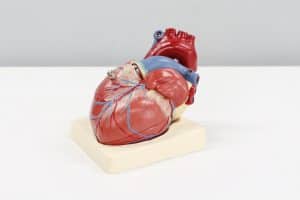
A patent analytics study of the Australian pharmaceutical industry
pharmafile | March 24, 2017 | News story | Medical Communications | Australia, patent, pharmaceutical
This report provides an analysis of the Australian pharmaceutical and biopharmaceutical industry through the lens of patents. By using the scale and intensity of patent activity, identifying areas of technological specialisation, and assessing the level of collaboration, the report provides an overview of pharmaceutical innovation in Australia.
Patent activity over time
The number of PCT applications filed in the pharmaceutical industry by Australian inventors or applicants (purple line) and the worldwide number of pharmaceutical PCT applications (grey line) is shown in Figure 1. Australian applications generally mirror the world trend, with a decline in applications from 2007 onwards. Unlike other technologies and patent applications in general, the industry appears not to have returned to early-2000s levels. Prior to 2000 there was a steady increase in patent applications from the early 1980s to the mid-1990s, followed by a steep increase in applications from 1995 to 2000. It may be that the decline in applications seen from 2007 onwards is a reversion to a more sustainable level of applications.
Figure 2 shows Australia’s share of worldwide pharmaceutical patents, based on inventor share. Co-inventorship (multiple inventors) is accounted for using shares. For example, if one PCT application has two inventors, each inventor is assigned an ‘inventor share’ of 0.5 for that application. In a list dominated by the US, Australia was ranked 13th, with a comparable share of PCT applications to Switzerland and Israel. Australia’s share of pharmaceutical PCT applications is 1.5 per cent and is comparable to medical device inventions where Australia ranked 13th with a share of 1.7 per cent.

Origin of innovative activity in Australia
The distribution of pharmaceutical invention origin by Australian state and territory is shown in Figure 3. Figure 3 represents applicant and inventor counts. When there are co-applicants on a patent with addresses in different states, each state is counted as having a patent. For example if co-applicants come from Queensland and New South Wales (NSW), both Queensland and NSW get counted as having one patent each. A similar formula applies to inventors. As can be seen in in Figure 3, Victoria has the most patents, followed by NSW and Queensland. The same trend can be seen with inventor counts on the right of Figure 3. Whilst the vast majority of inventive activity occurs in the capital cities, patents with at least one applicant from Newcastle (41), Geelong (22), the Orana and far west of NSW (12), the Gold Coast (10) and Illawarra (10) all contributed to pockets of patenting activity (data not shown).

Figure 4 represents a breakdown of all Australian PCT applications filed between 1 January 2000 and 31 March 2013 by WIPO technology field,5 to show where the pharmaceutical industry lies compared to other industries in Australia. The pharmaceutical category represents drugs and therapeutic uses of compounds (both synthetic and biological in nature), and is almost identical to the definition of pharmaceuticals used in this report. A small number of applications analysed as pharmaceuticals in this report, those related to the therapeutic use of cells, are included in the biotechnology category in this graph. However, the biotechnology category also includes a much larger range of biological research, such as apparatus for enzymology, fermentation, testing, microorganisms and in vitro uses of the technology.

Figure 4 shows that civil engineering and medical technology are the only technology areas with more PCT applications than pharmaceuticals in Australia. Pharmaceuticals accounted for 10.3 per cent of all Australian PCT applications between 1 January 2000 and 31 March 2013.
Top companies
Figure 5 shows the top 18 companies filing PCT applications, broken down by company type. Large firms accounted for 12 of the top 18 applicants with small-to-medium enterprises (SMEs) only accounting for six. Large foreign pharmaceutical company Johnson & Johnson is on the list as at least one Australian inventor appears on their patents. Large Australian firms that make the list include Bionomics Ltd., Biota Scientific Management Pty. Ltd., CSL, Novogen Research (Box 3), Alphapharm (Box 1), Avexa and Cellmid (formally Medical Therapies Ltd.).

Conclusion:
On a world scale, Australia has 1.5 per cent of pharmaceutical patents over the study period which places it 13th based on inventor share, just behind Israel and Switzerland. Australia also has a positive specialisation in the pharmaceutical technology, which reinforces the strength that Australia has in the area.
Australia has a slight focus on biologics (43 per cent of applications) when compared with small molecules (37 per cent). This is in contrast with the rest of the world during the same period, in which small molecules make up 49 per cent of applications compared with just 29 per cent for biologics. This indicates that Australia has a particular strength on the development of biological therapeutics.
Within Australia, the majority of inventions originate in Victoria. The top destinations for pursuing patents are the US, Australia, Europe, China and Japan.
Research organisations dominate the patenting landscape, filing 40 per cent of applications, followed by SMEs (21 per cent) and foreign corporations (19 per cent). A large number of SMEs with significant patent portfolios had their origins in research organisations. This trend is the same for both PCT applications and national phase entries in Australia. Out of the top 21 applicants, 16 are research organisations and only five are companies. The top applicants are the University of Queensland, Monash University and WEHI. Top companies are Bionomics, Biota, CSL and Mesoblast. Significant numbers of SMEs owe their establishment to research organisations, demonstrating how much these organisations drive the Australian pharmaceutical industry. Australian generic manufacturers also file patents, and contribute not just to Australia, but are part of a global industry.
There is not a strong collaborative link between Australian industry and research organisations. Out of 167 applications with an applicant from the research sector, 38 per cent of had industry-research collaboration. Top patent filers such as the University of Queensland, Monash University and the CSIRO have extensive links and they collaborate with overseas entities as well as Australian partners. SMEs show very little evidence of collaboration. Large Australian pharmaceutical firm CSL does not show many collaborative patent links either.
Related Content

Zumutor’s cancer drug trial cleared by FDA
On 11 August 2023, the biopharmaceutical company Zumutor Biologics announced that the trial of its …

Astellas set to open new life sciences facilities in Cambridge, Massachusetts
On 9 August 2023, Astellas Pharma announced its plans to open what it has described …

Amarin’s Vazkepa accepted by SMC for patients with cardiovascular disease
On 7 August 2023, the Scottish Medicines Consortium (SMC) announced that they had accepted Amarin’s …









